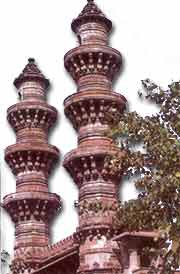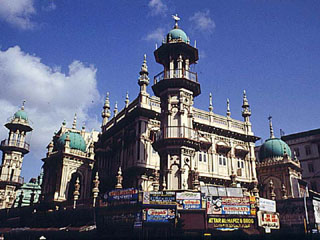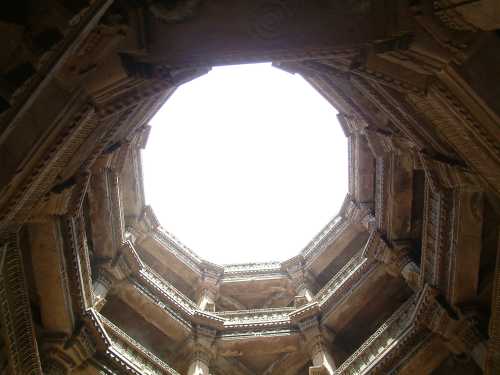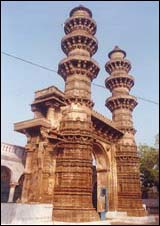


One of the most liveliest cities in India
City of Ahmedabad
A visit to Ahmedabad is a great way to discover Gujarat.
Variety is its fascination
Places of interest:
Ahmedabad was built by Sultan Ahmed Shah to serve as his capital in 1411 A .D. While returning from one of his campaigns the young Sultan Ahmed Shah impressed with the scenic surroundings and climate of the town of Ashawal undertook the building of his new capital with a fort and twelve gates and named it Ahmedabad. While you can only see the ramparts of the 600 year old Bhadra fort, almost all the twelve gates with the exception of one have withstood the ravages of time and man.
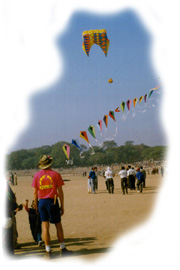

From the hustle and bustle of C. G. Road in the heart of Ahmedabad to the quite retreat of Sabarmati Ashram. From the mute grandeur of the Shaking Minarets to the noisy prosperity of the countryís largest textile empires, Ahmedabadís fascination is its variety. Old and new stand side by side. The modern and ecclectic mix with history and tradition offering something for everyone. There is nothing like a perfect time to visit Ahmedabad. Starting with Makar Sankrantiís kite flying in January, the masti continues only to peak at the nine day long Navratri with Dandiya and Ras Garba in November followed by the dazzle and glitter of Diwali festivities which last a whole month.
The SHAKING MINARETS of Sidi Bashirís Mosque remain a mystery till today. Shake one minaret and the other resonates in harmony while the interconnecting terrace stands still. The Jain temples of Ahmedabad present yet another distinctly different style of architecture of which the HATHEESING JAIN TEMPLE is most representative. A grandiose structure built in marble that cost a whopping Rs. 10 lakhs way back in 1848. Next is the 300 year old DUTCH CEMETERY near Kankaria lake. These tombs dating back to the 17th and 18th centuries were in memory of the Dutch and English pioneers who established their factories in Surat and Ahmedabad. Now on to the museums and art galleries of Ahmedabad. The CALICO TEXTILE MUSEUM one of the finest textile museums in the world displays an impressive collection of rare textiles and costumes that date back to the early 17th century. At the UTENSILS MUSEUM more than 2000 varieties of traditional Indian utensils in curious shapes and sizes are on display. SHREYAS FOLK ART MUSEUM with its collection of folk culture from Gujarat as well as the L . D. MUSEUM and INSTITUTE OF INDOLOGY are unique. AMDAVAD NI GUFA designed by the renowned architect Balkrishna Doshi houses a collection of M . F. Hussainís paintings and adjoining this is the Herwitz art gallery. And finally the crown jewel, SABARMATI ASHRAM . Mahatma Gandhiís home from 1918-1930, the Ashram is tucked away in a quiet corner by the river Sabarmati. It served as Mahatma Gandhiís base for his Dandi Satyagraha, that triggered the nonviolent agitation against the British.
